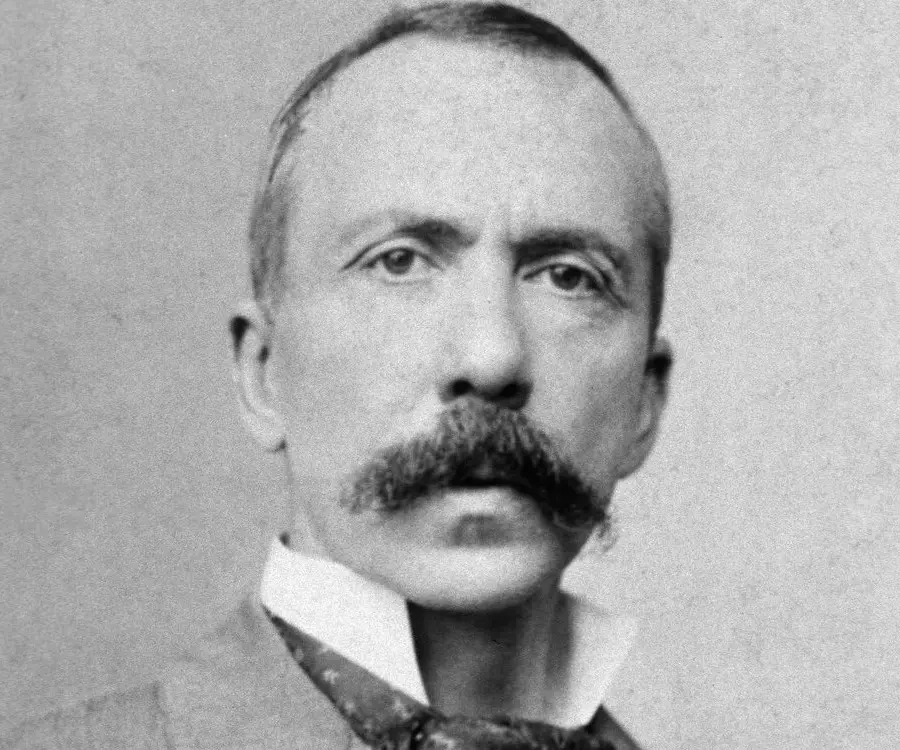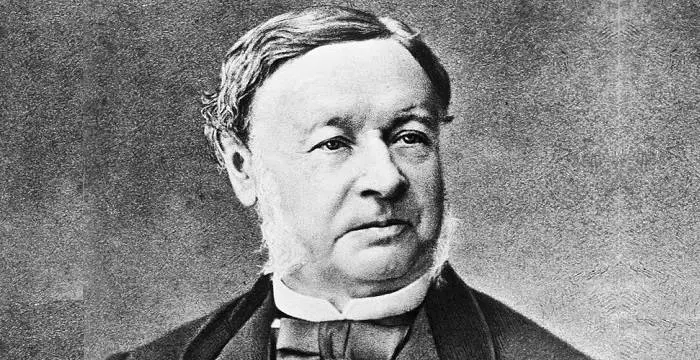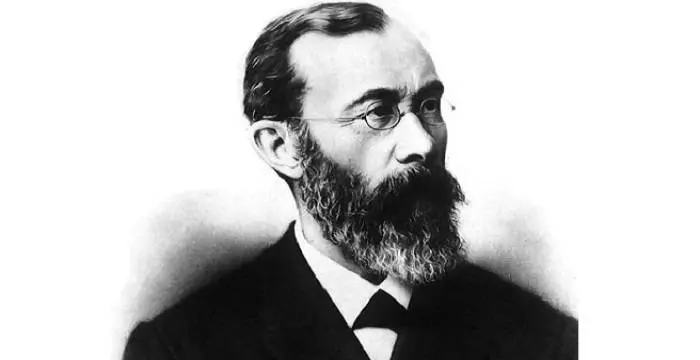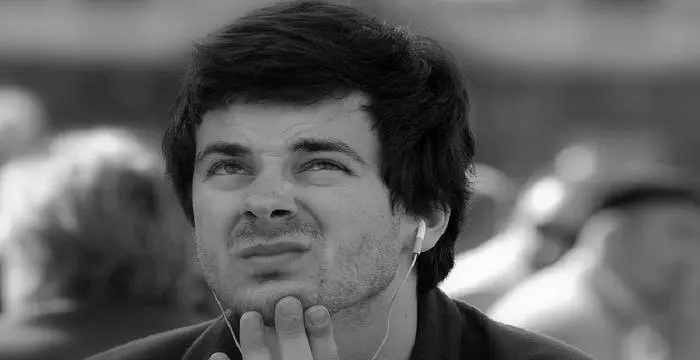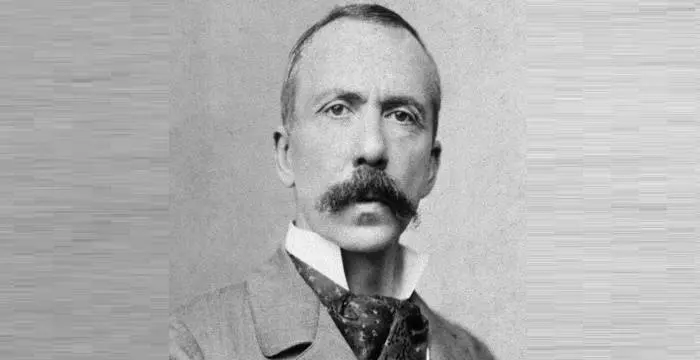
Charles Richet - Scientists, Facts and Childhood
Charles Richet's Personal Details
Charles Robert Richet was a French physiologist who was awarded the ‘Nobel Prize for Physiology or Medicine’ in 1913
| Information | Detail |
|---|---|
| Birthday | August 25, 1850 |
| Died on | December 4, 1935 |
| Nationality | French |
| Famous | Scientists, Physiologists |
| Universities |
|
| Birth Place | Paris, France |
| Gender | Male |
| Sun Sign | Virgo |
| Born in | Paris, France |
| Famous as | Physiologist |
| Died at Age | 85 |
// Famous Scientists
Juliane Koepcke
Juliane Koepcke is a German-Peruvian biologist, who was the lone survivor among the 92 passengers and crew of the ill-fated LANSA Flight 508 that crashed in the Peruvian rainforest on 24 December 1971. Know more about her life in this biography.
Henry Cavendish
Henry Cavendish was a theoretical chemist and physicist, renowned for discovery of hydrogen and calculation of the mass of earth. To know more about his childhood, profile, timeline and career read on
Konstantin Tsiolkovsky
Konstantin Tsiolkovsky was a Russian rocket scientist and a pioneer of astronautics. This biography provides detailed information about his childhood, family, personal life, career, achievements, etc.
Charles Richet's photo
Who is Charles Richet?
Charles Robert Richet was a French physiologist who was awarded the ‘Nobel Prize for Physiology or Medicine’ in 1913 for his research work on the serious life-threatening allergic reaction anaphylaxis. Richet was also a noted pathologist, bacteriologist and medical statistician. His other research works include examining physiology of respiration and digestion, regulation of body heat, epilepsy and work on parapsychology. He aided in elucidating issues like asthma, hay fever and many other allergic reactions caused due to exposure to foreign substances and analysed and clarified cases related to toxicity and unexpected deaths not comprehensible earlier. He was a member of the ‘Académie des Sciences’ and served as President of the ‘Society for Psychical Research’ in UK. He became honorary president and later full-time president of the ‘Institut Métapsychique International’ in Paris. He was also an enthusiast of art and literature and achieved acclamation as a distinguished playwright, novelist and poet and also had great interest in hypnosis and extrasensory perception. He remained editor of the scientific journal, ‘Revue Scientifique’ for over two decades and co-editor of ‘Journal de Physiologie et de Pathologie Générale’. He was conferred with ‘Cross of the Legion of Honour’ in 1926.
// Famous Physiologists
Theodor Schwann
Theodor Schwann was a German physiologist who discovered the Schwann cells in the peripheral nervous system. This biography of Theodor Schwann provides detailed information about his childhood, life, achievements, works & timeline.
Wilhelm Wundt
Wilhelm Wundt was a renowned doctor who conducted pioneering studies on experimental psychology. To know more about his childhood, career, profile and timeline read on
Charles Best
Charles Best was a great scientist and a renowned physiologist who is remembered for being the co-discoverer of insulin. Read this biography to learn about his profile, childhood, life and timeline.
Childhood & Early Life
He was born on August 26, 1850, in Paris to Alfred Richet and Eugenie, née Renouard. His father was a Professor of Clinical Surgery in the Faculty of Medicine in Paris.
He completed his studies in Paris and received his Doctor of Medicine in 1869.
He had interest in literature and during his youth whenever he got bored with anatomy and surgery, he used to indulge himself in writing poetry and drama.
As a student he assisted surgeons namely Aristide Auguste Stanislas Verneuil and Léon Clément le Fort.
In 1872, while still studying, he became an interne des hôpitaux at the ‘Salpêtrière’ hospital in Paris. Richet was inducted as in charge of a female ward where he witnessed works of French neurologist Jean-Marie Charcot on hysterical patients.
After observing the hypnotic experiments, he took interest in the subject and produced many such hypnotic trances in his patients for the next couple of years. Presumably these experiments and know-how influenced him to dedicate himself in physiology instead of developing a career in surgery. The term ‘metapsychism’ was coined by him.
Career
During 1876-82, he worked in the labs of Pierre Eugène Marcellin Berthelot and Étienne Jules Marey at the ‘Collège de France’ and thereafter in the lab of Edmé Félix Alfred Vulpian at the ‘Faculty of Medicine’. In the lab of Charles Philippe Robin, he made investigations related to histology. He worked in a Paul Bert directed marine biological station and examined digestion in fish.
In 1878 he became a Doctor of Sciences. Through his doctoral thesis, he showed that the sensory nerves that lack blood supply slowly die from the periphery towards the center.
From 1878 to 1902 he served as editor of the scientific journal, ‘Revue Scientifique’.
He repeated the research work on human digestion conducted by famous US surgeon William Beaumont, who became renowned as "Father of Gastric Physiology".
He worked extensively for years on body heat and the function played by central nervous system in temperature control. The system of thermoregulation in homoiothermic animals was examined by him. Not much was known about procedures applied by animals lacking cutaneous transpiration to protect them from overheating as well as to get warm from cold stage prior to research work by Richet between 1885 to 1895 on shivering due to temperature and polypnoea.
From 1887 to 1927 he served as Professor of Physiology in the Faculty of Medicine at the ‘Collège de France’ in Paris.
While pursuing research on therapeutics in November 1888 he demonstrated that vaccination of blood of animals against an infection prevents them from the infection and he used this principle to tuberculosis. On December 6, 1890, he first applied serotherapeutic injection on human being. Further in 1900 he showed that dogs suffering from tuberculosis could be cured by feeding them raw meat and milk.
In 1888 he and Jules Héricourt examined an epithelial tumour of a dog and found out a new type of staphylococcus bacterium in it. They developed a pure culture of the bacterium by adopting the standard strategy followed since experiment of fowl cholera by renowned French chemist and microbiologist Louis Pasteur.
While conducting experiments he observed that a dog that he injected sea anemone (Actinia) toxin for protection could stand the antigen. However a second dose given after three weeks developed anaphylaxis in the dog.
Thus when harmful and fatal responses resulted on second exposure of the antigen rather than causing prophylaxis that is prevention, in 1902 he coined the word ‘aphylaxis’ for the life-threatening allergic reaction, where ‘a’ denotes without and ‘phylaxis’ denotes protection. The term was later altered to anaphylaxis.
He had varied interests other than his main interest - physiology. The experiments done by Étienne-Jules Marey on bird flight fascinated him about aviation and saw him collaborating with French engineer Victor Tatin between 1890 and 1897. He guided and financed Louis Charles Bréguet and their collaboration saw creation of ‘gyroplane Bréguet-Richet’, the first helicopter that took to the air on September 29, 1907.
He had great interest in hypnosis and extrasensory perception and in 1891 he set up the ‘Annales des Sciences Psychiques’ with Dr. Dariex. He remained in the company of many famous spiritists and occultists of that time like Gabriel Delanne and Albert von Schrenck-Notzing.
In 1898 he became a member of ‘Académie de Médecine’.
In 1901 he showed that by decreasing the content of sodium chloride in food, potassium bromide performs effectively for epilepsy treatment so much so that the therapeutic dose decreases to 2 g from 10 g.
He became the president of the Society for Psychical Research in the UK in 1905. The term ‘ectoplasm’ was coined by Richet who experimented with the likes of William Eglinton, Elisabeth D'Espérance and Eva Carrière.
In 1907 he started to develop a general theory of anaphylaxis which was based on observations made by him and his colleagues. His research work on anaphylaxis aided in elucidating diseases like asthma and allergic rhinitis as also other allergic reactions to foreign substances. The research also helped in explaining some cases related to intoxication and sudden death, which remained incomprehensible earlier.
The ‘Académie des Sciences’ inducted him as a member in 1914.
In 1917 he became co-editor of ‘Journal de Physiologie et de Pathologie Générale’. Many papers on physiology, experimental pathology, pathological psychology, normal psychology, physiological chemistry and several research works that he conducted in the physiological lab of the Faculty of Medicine, Paris were published by him.
He was inducted by the ‘Institut Métapsychique International’ in Paris as the honorary president in 1919 and became full-time president in 1929.
Some of his works on parascientific subjects are ‘Treatise on Metapsychics’ in 1922, ‘Our Sixth Sense’ in 1928 and ‘The Great Hope’ in 1933.
He had profound interest in literature and wrote several books on history, many of which were issued with pseudonym Charles Epheyre. He also penned down poetries, dramas, novels and philosophical works.
Awards & Achievements
He received the ‘Nobel Prize for Physiology or Medicine’ in 1913.
Personal Life & Legacy
He married Amélie Aubry in 1877 and the couple was blessed with five sons and two daughters.
On December 4, 1935, he passed away in Paris. He was 85 at the time of his death.
// Famous French peoples
Simone Signoret
Simone Signoret was a French actress who became the first French person to win an Academy Award. Check out this biography to know about her childhood, family life, achievements and other facts related to her life.
Jade Weber
Scroll down this bio to find out everything about French model Jade Weber. Be it fun facts, birthday, trivia or details of her personal and family life, you’ll find everything here.
Micheline Roquebrune
Micheline Roquebrune is a petite Moroccan-French painter best known as the third wife the legendary Scottish actor Sir Sean Connery. Check out this biography to know about her birthday, childhood, family life, achievements and fun facts about her.
Charles Richet biography timelines
- // 26th Aug 1850He was born on August 26, 1850, in Paris to Alfred Richet and Eugenie, née Renouard. His father was a Professor of Clinical Surgery in the Faculty of Medicine in Paris.
- // 1869He completed his studies in Paris and received his Doctor of Medicine in 1869.
- // 1872In 1872, while still studying, he became an interne des hôpitaux at the ‘Salpêtrière’ hospital in Paris. Richet was inducted as in charge of a female ward where he witnessed works of French neurologist Jean-Marie Charcot on hysterical patients.
- // 1876 To 1882During 1876-82, he worked in the labs of Pierre Eugène Marcellin Berthelot and Étienne Jules Marey at the ‘Collège de France’ and thereafter in the lab of Edmé Félix Alfred Vulpian at the ‘Faculty of Medicine’. In the lab of Charles Philippe Robin, he made investigations related to histology. He worked in a Paul Bert directed marine biological station and examined digestion in fish.
- // 1877He married Amélie Aubry in 1877 and the couple was blessed with five sons and two daughters.
- // 1878In 1878 he became a Doctor of Sciences. Through his doctoral thesis, he showed that the sensory nerves that lack blood supply slowly die from the periphery towards the center.
- // 1878 To 1902From 1878 to 1902 he served as editor of the scientific journal, ‘Revue Scientifique’.
- // 1885 To 1895He worked extensively for years on body heat and the function played by central nervous system in temperature control. The system of thermoregulation in homoiothermic animals was examined by him. Not much was known about procedures applied by animals lacking cutaneous transpiration to protect them from overheating as well as to get warm from cold stage prior to research work by Richet between 1885 to 1895 on shivering due to temperature and polypnoea.
- // 1887 To 1927From 1887 to 1927 he served as Professor of Physiology in the Faculty of Medicine at the ‘Collège de France’ in Paris.
- // 1888In 1888 he and Jules Héricourt examined an epithelial tumour of a dog and found out a new type of staphylococcus bacterium in it. They developed a pure culture of the bacterium by adopting the standard strategy followed since experiment of fowl cholera by renowned French chemist and microbiologist Louis Pasteur.
- // 1891He had great interest in hypnosis and extrasensory perception and in 1891 he set up the ‘Annales des Sciences Psychiques’ with Dr. Dariex. He remained in the company of many famous spiritists and occultists of that time like Gabriel Delanne and Albert von Schrenck-Notzing.
- // 1898In 1898 he became a member of ‘Académie de Médecine’.
- // 1901In 1901 he showed that by decreasing the content of sodium chloride in food, potassium bromide performs effectively for epilepsy treatment so much so that the therapeutic dose decreases to 2 g from 10 g.
- // 1902Thus when harmful and fatal responses resulted on second exposure of the antigen rather than causing prophylaxis that is prevention, in 1902 he coined the word ‘aphylaxis’ for the life-threatening allergic reaction, where ‘a’ denotes without and ‘phylaxis’ denotes protection. The term was later altered to anaphylaxis.
- // 1905He became the president of the Society for Psychical Research in the UK in 1905. The term ‘ectoplasm’ was coined by Richet who experimented with the likes of William Eglinton, Elisabeth D'Espérance and Eva Carrière.
- // 1907In 1907 he started to develop a general theory of anaphylaxis which was based on observations made by him and his colleagues. His research work on anaphylaxis aided in elucidating diseases like asthma and allergic rhinitis as also other allergic reactions to foreign substances. The research also helped in explaining some cases related to intoxication and sudden death, which remained incomprehensible earlier.
- // 1913He received the ‘Nobel Prize for Physiology or Medicine’ in 1913.
- // 1914The ‘Académie des Sciences’ inducted him as a member in 1914.
- // 1917In 1917 he became co-editor of ‘Journal de Physiologie et de Pathologie Générale’. Many papers on physiology, experimental pathology, pathological psychology, normal psychology, physiological chemistry and several research works that he conducted in the physiological lab of the Faculty of Medicine, Paris were published by him.
- // 1919 To 1929He was inducted by the ‘Institut Métapsychique International’ in Paris as the honorary president in 1919 and became full-time president in 1929.
- // 4th Dec 1935On December 4, 1935, he passed away in Paris. He was 85 at the time of his death.
// Famous Virgo Celebrities peoples
Temple Grandin
Temple Grandin is a well-known American writer, autistic activist and animal expert. This biography profiles her childhood, life, achievements, career and timeline
Alex Holtti
Check out all that you wanted to know about Alex Holtti, the famous Danish Viner & YouTuber; his birthday, his family and personal life, his girlfriends, fun trivia facts and more.
Benjamin Atkinson
Benjamin Atkinson is the son of the world-renowned British actor and comedian, Rowan Atkinson. Check out this biography to know about his childhood, family, personal life, including his age, birthday, etc.
Jack Dylan Grazer
Jack Dylan Grazer is an American actor known mainly for his performance in the movie version of ‘Stephen King’s novel ‘It.’ Check out this biography to know about his childhood, family, personal life, birthday, etc.
Ted Williams
Ted Williams was an American baseball player. Read this biography to learn more about his profile, childhood, life and timeline.
Mia Diaz
All about American dancer and actor Mia Diaz, including her age, family life, birthday, boyfriends, net worth, and some fun facts.
Charles Richet's FAQ
What is Charles Richet birthday?
Charles Richet was born at 1850-08-25
When was Charles Richet died?
Charles Richet was died at 1935-12-04
Where was Charles Richet died?
Charles Richet was died in Paris
Which age was Charles Richet died?
Charles Richet was died at age 85
Where is Charles Richet's birth place?
Charles Richet was born in Paris, France
What is Charles Richet nationalities?
Charles Richet's nationalities is French
What was Charles Richet universities?
Charles Richet studied at University of Paris
What is Charles Richet's sun sign?
Charles Richet is Virgo
How famous is Charles Richet?
Charles Richet is famouse as Physiologist



